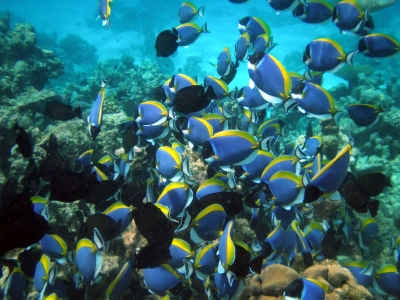
Schooling behaviour, Activity characteristic of clupeiform fish (herrings, anchovies, and allies) in which many fish swim together, appearing to act as a single organism. A school of herring may contain many millions of individuals of roughly similar size. Fishes above or below the size limit break away and form schools among themselves. The primary advantage to the fish seems to be safety for the individual. When threatened, a school of thousands of anchovies, spread over several hundred metres, will contract to a writhing sphere only a few metres across, thereby thwarting the attempt of a natural predator to catch a single individual.
Herring are among the more spectacular schooling fish. They aggregate together in huge numbers. The largest schools are often formed during migrations by merging with smaller schools. “Chains” of mullet schools one hundred kilometres long have been seen migrating in the Caspian Sea. Radakov estimated herring schools in the North Atlantic can occupy up to 4.8 cubic kilometres with fish densities between 0.5 and 1.0 fish/cubic metre. That is about three billion fish in one school. These schools move along coastlines and cross the open oceans. Herring schools have very precise arrangements which allow the school to maintain relatively constant cruising speeds. Herrings have excellent hearing, and their schools react very fast to a predator. The herrings keep a certain distance from a moving scuba diver or cruising predator like a killer whale, forming a space which looks like a doughnut from a spotter plane.
Many species of large predatory fish also school, including many highly migratory fish, such as tuna and some ocean going sharks. Cetaceans such as dolphins, porpoises and whales, operate in organised social groups called pods.
Schooling behaviour is generally described as a trade-off between the anti-predator benefits and the costs of increased competition for food.
Picture Credit : Google




